Wildflowers, Grasses and Other Nonwoody Plants
Media

Species Types
Scientific Name
Scutellaria incana
Description
Showy clusters of blue-violet, two-lipped flowers adorn downy skullcap. This native mint is found mostly in the southern half of the state.
Media
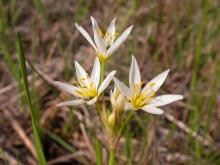
Species Types
Scientific Name
Nothoscordum bivalve
Description
False garlic looks like a wild garlic or onion plant, but it doesn’t smell like one. The flowers can be white, yellowish, or greenish, and they appear in spring and sometimes also fall.
Media

Species Types
Scientific Name
Antennaria parlinii
Description
Plainleaf pussytoes, named for its fuzzy flower heads, is one of the few flowering plants in Missouri that grows well in dry and shaded areas. It’s also an indicator of acid soils.
Media
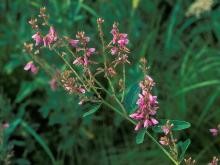
Species Types
Scientific Name
Desmodium spp. (17 species in Missouri)
Description
Missouri has 17 species of tick trefoils, which live in a variety of habitats. Hikers know them well from their chains of hairy little seedpods that stick to clothing like parasites!
Media
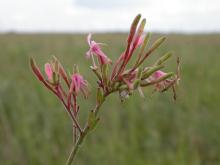
Species Types
Scientific Name
Oenothera filiformis (formerly Gaura longiflora, G. biennis)
Description
Large-flowered gaura is a tall plant whose white flowers turn pinkish as they age. Four petals point upward, then bend back, and 8 stamens droop downward. The flowers look something like small butterflies.
Media
Species Types
Scientific Name
Erigeron philadelphicus
Description
The antique belief that this plant might repel fleas gives the fleabanes their name. There are more than 170 fleabanes in the genus Erigeron in North America. This one is scattered to common nearly throughout Missouri. Native Americans used this species medicinally for a variety of ailments.
Media
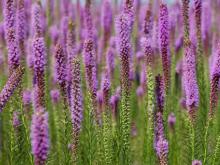
Species Types
Scientific Name
Liatris pycnostachya
Description
Prairie blazing star has an unbranched stalk with many densely crowded, rose-purple flowerheads. It is a signature wildflower of the tallgrass prairie.
Media

Species Types
Scientific Name
Euphorbia commutata
Description
Conspicuous in early spring, wood spurge is a dainty species with loose clusters of small, light green flowers. Look for it in woods, valleys, streamsides, and waste areas in Ozark landscapes.
Media

Species Types
Scientific Name
Matelea decipiens
Description
The brown, starlike, spreading flowers of climbing milkweed differ from those of other milkweeds, but milky sap, warty pods with silk-tasseled seeds, and the structures in the center of the flowers show its true alliance.
Media
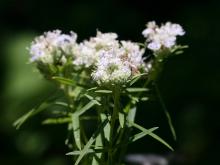
Species Types
Scientific Name
Pycnanthemum tenuifolium
Description
Slender mountain mint has smooth, square stems, opposite, narrow leaves, and dense heads of 2-lipped white (or lavender) flowers. Aromatic and minty, it can be grown at home in the herb garden, and its leaves used for seasoning food.
See Also
About Wildflowers, Grasses and Other Nonwoody Plants in Missouri
A very simple way of thinking about the green world is to divide the vascular plants into two groups: woody and nonwoody (or herbaceous). But this is an artificial division; many plant families include some species that are woody and some that are not. The diversity of nonwoody vascular plants is staggering! Think of all the ferns, grasses, sedges, lilies, peas, sunflowers, nightshades, milkweeds, mustards, mints, and mallows — weeds and wildflowers — and many more!





















